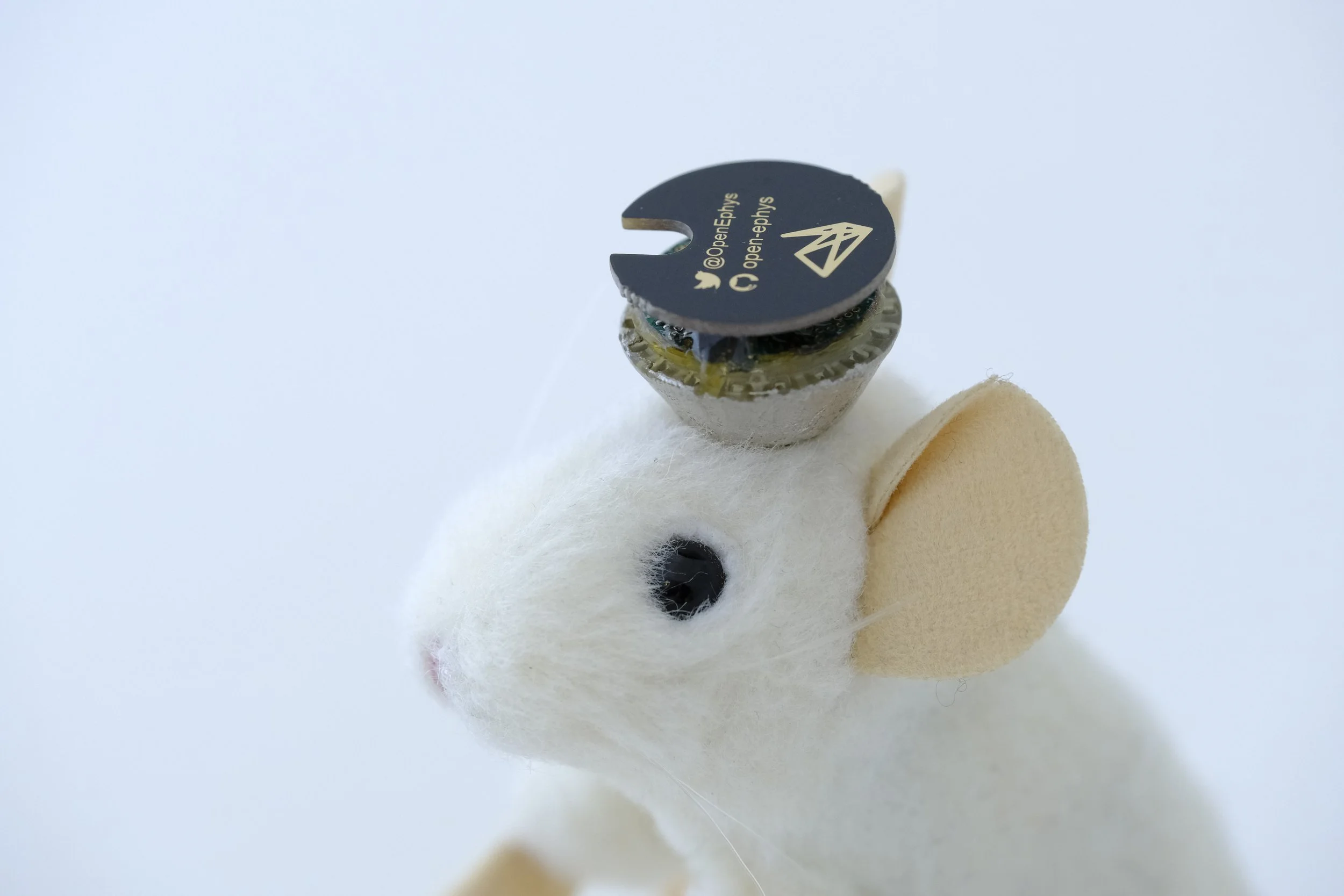ShuttleDrive
The ShuttleDrive is a chronic drive implant for extracellular electrophysiology that can be used to individually position up to 16 microwire electrodes or electrode bundles in mice, with up to 64 channels.
Description
This design is the successor to the flexDrive, and has improved build speed, robustness, size, and drive stability and linearity.
The implant weighs approximately 2 grams, so it can be used in freely moving mice. The small size and low center of gravity of the design also makes it possible to target off-center areas, or even to fit a drive implant under a microscope for simultaneous imaging and electrophysiology.
The flexible recording array geometry allows recordings from multiple brain areas. Individual lowering of each electrode makes it possible to hit deep and small targets. The drive is easy to build, two or three drives can be built per day even with relatively little training. It accommodates arbitrary spatial arrangements of electrodes, and is compatible with a variety of recording systems.
Features
Channel count: 18 drives, up to 64 channels per drive.
Weight: ~2g for 16 tetrode drives.
Build time: < 1 day.
Travel distance: 4.5 mm travel distance
Fully enclosed mechanism
Low center of gravity
Easy and fast to assemble
Drive parts, tools, and accessories can be purchased from our online store.
Drive Components
A 3d printed drive body
3d printed drive shuttles
Polymide guide tubes
Polymicro shuttle tubes
These components can be purchased as bundle on our store.
Custom screws (reusable), and
Guide tube material, and.
Electrode interface boards (for 64ch or 32ch omnetics headstages )
.. are also available on our store.
To assemble the drive you will need an assembly jig and a custom screwdriver, (also on the store).
Assembly jig
Custom screwdriver
Real-time video shows construction of 4 drive mechanisms and loading of a tetrode.
Building drives just got easy
Multiple innovative features make this drive design faster to build than any previous designs.
Even with little training, drives can be built from scratch in a few hours, and thanks to the new tetrode twister, making the electrodes is not a significant factor any longer. The main remaining step that takes up time is loading and gold-pinning the tetrodes - for that step you still need steady hands and some time.
Citing this Work
Citations are critical for tracking the impact of open source designs like this one. If you use this hardware, please cite the following paper in your work:
Voigts J, Newman JP, Wilson MA, Harnett MT (2020) An easy-to-assemble, robust, and lightweight drive implant for chronic tetrode recordings in freely moving animals. Journal of Neural Engineering 17: 026044 LINK












